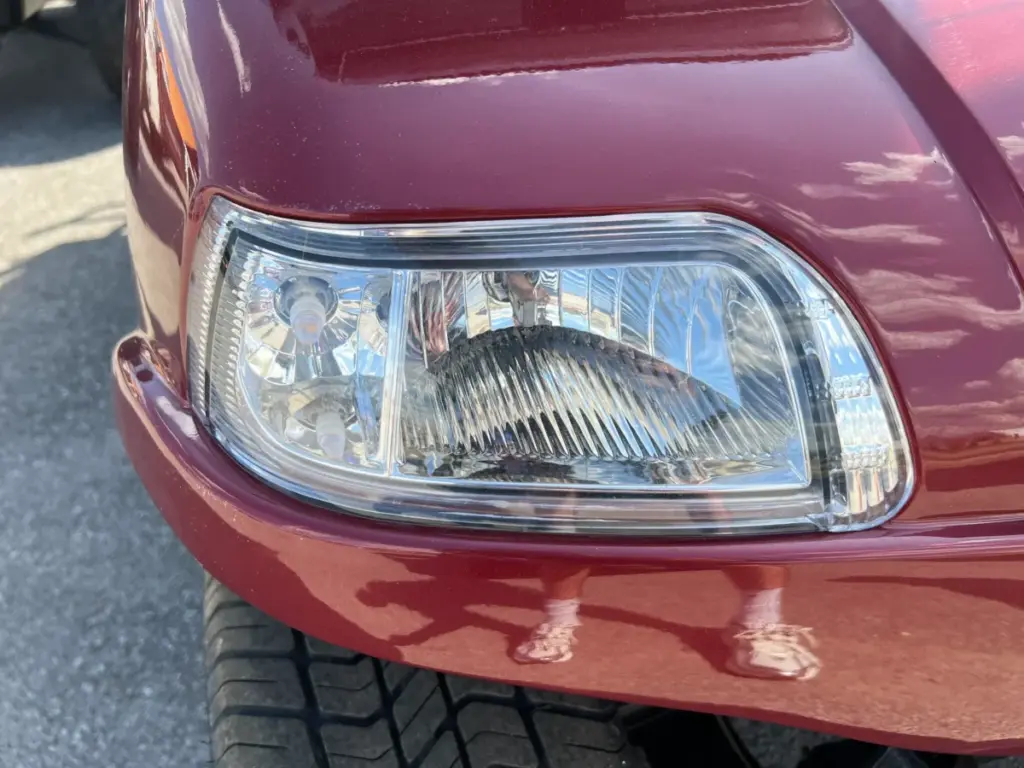Golf carts have come a long way from being simple vehicles used only on golf courses. Today, they’re common in neighborhoods, resorts, campgrounds, farms, and even at large events. Whether you use one for fun or daily transportation, understanding its battery system is essential. One of the most common questions new owners ask is: how many volts are golf cart batteries? The answer affects speed, performance, and overall efficiency. In this guide, we’ll explore golf cart battery voltage, how to identify your setup, and how to choose the right batteries for your needs.

Golf Cart Battery Voltage Basics
Golf cart batteries usually come in three main voltages: 6-volt, 8-volt, and 12-volt. A single battery at any of these voltages doesn’t power the cart on its own. Instead, several are connected in series to form a battery pack. The most common total system voltages are 36 volts, 48 volts, and, in some high-performance carts, 72 volts. The higher the total voltage, the more powerful the cart will be.
Common Golf Cart Battery Setups
If you’re asking how many volts are golf cart batteries, you’re really asking about the system they create when connected. Typical configurations include:
- 36-Volt Systems: Six 6-volt batteries wired together. Common in older carts, these provide modest power and range.
- 48-Volt Systems: Often six 8-volt batteries or four 12-volt batteries. This setup is standard in many modern carts, offering a good balance of speed, torque, and battery life.
- 72-Volt Systems: Six 12-volt batteries in series. These are less common but provide maximum performance, often used for specialty carts or demanding environments.
The system voltage is one of the best indicators of how your golf cart will perform on hills, how far it can travel, and how much weight it can carry.

How to Identify Battery Voltage
There are a few simple ways to determine the voltage of a golf cart battery system. First, check the label on the battery itself, as most will have the voltage clearly printed. If the label is missing or unclear, you can count the filler caps on a lead-acid battery—there’s usually one cap for every two volts. For instance, three caps typically indicate a 6-volt battery, four caps an 8-volt, and six caps a 12-volt. Once you know the individual battery voltage, you can multiply the number of batteries by their voltage to find the total system output. For example, six 6-volt batteries equal 36 volts, while four 12-volt batteries provide 48 volts.
If you plan to use your golf cart daily, or if you live in a hilly area, a 48-volt system is often worth the extra investment.
Do More Volts Mean More Speed?
A natural question when learning how many volts are golf cart batteries is whether more volts equal more speed. Generally, yes. A 48-volt system can accelerate faster and handle hills better than a 36-volt system. However, speed also depends on the motor, controller, and overall cart design. Adding more voltage without proper upgrades can damage components. That’s why upgrading a 36-volt cart to 48 volts usually requires changing both the motor and controller for safe performance.

Lead-Acid vs. Lithium Batteries
Traditionally, golf carts have relied on lead-acid batteries. They’re affordable and widely available, but they require maintenance—checking water levels, cleaning terminals, and charging carefully. Newer carts, however, are increasingly adopting lithium-ion batteries. These are lighter, charge faster, last longer, and require almost no maintenance. They also maintain steady power throughout the charge cycle, while lead-acid batteries can lose performance as they discharge. The downside is cost: lithium battery packs can cost several times more than lead-acid. For many owners, though, the convenience and longevity justify the price.
Battery Lifespan and Care
To maximize the lifespan of golf cart batteries, proper care is essential. Always charge the batteries after each use and avoid letting them discharge too deeply, as this can shorten their life. It’s also important to keep the terminals clean and free of corrosion to ensure efficient power transfer. When the cart is not in use, it should be stored in a cool, dry location to protect the batteries from extreme temperatures. For carts with lead-acid batteries, regular maintenance is required—be sure to check the water levels and top them off with distilled water as needed to keep the batteries functioning properly.

Signs It’s Time for Replacement
Recognizing the signs of failing batteries can prevent being stranded. There are several clear signs that golf cart batteries may need replacement. A common indicator is a reduced driving range, where the cart can no longer travel as far on a full charge. You might also notice it struggling to climb hills or carry loads, showing that the batteries can’t deliver enough power. Another warning sign is when the batteries take longer to charge or discharge more quickly than normal, reducing overall usability. Finally, visible physical damage, such as swelling, leaking, or corrosion on the battery case, is a strong signal that the batteries are nearing the end of their life and should be replaced.
Cost of Replacing Golf Cart Batteries
The cost of replacement depends on your system’s voltage and the type of battery you choose. A full set of lead-acid batteries for a 36-volt system may cost around $600–$800, while a 48-volt set might run $800–$1,200. Lithium replacements can cost between $2,000 and $4,000, but they last longer and require less maintenance. When calculating how many volts are golf cart batteries, it’s worth considering long-term costs as well as upfront price.

Lithium Conversion: Is It Worth It?
Many owners of older carts ask whether it’s worth upgrading to lithium. The answer depends on how you use your cart. If you rely on it daily, lithium’s faster charging, lighter weight, and longer lifespan may justify the higher cost. If you only use your cart occasionally, sticking with lead-acid may make more financial sense. Either way, knowing your voltage system helps you understand what kind of conversion is possible.
Choosing the Right Voltage for Your Needs
Choosing the right golf cart battery system depends on how the cart will be used. For casual use on flat terrain, a 36-volt system is a budget-friendly and practical choice, providing enough power for light, occasional driving. For daily use or navigating hilly terrain, a 48-volt system offers better power and efficiency, making it more reliable for regular commuting or moderate loads. For those needing high performance or carrying heavy loads, a 72-volt system or a lithium battery upgrade delivers the strongest performance, ensuring longer range, faster acceleration, and greater durability under demanding conditions.

Conclusion: How Many Volts Are Golf Cart Batteries?
So, how many volts are golf cart batteries? Most golf carts use 6-volt, 8-volt, or 12-volt batteries wired together to create 36-, 48-, or 72-volt systems. The system voltage determines how powerful the cart is, how well it handles hills, and how long it runs on a charge. While 36-volt systems are affordable and practical for light use, 48-volt and 72-volt systems provide more torque, speed, and efficiency. With options ranging from traditional lead-acid to advanced lithium batteries, today’s golf cart owners can match their setup to their lifestyle and budget.
At Hartville Golf Carts, we guide customers through choosing the right cart and battery system. Whether you’re buying your first golf cart or upgrading an older model, knowing your voltage is the key to safe, efficient, and enjoyable driving.








